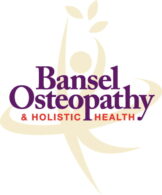Here are some top tips to help you deal with those long-haul flights:
- Stay hydrated!
Make sure you drink non-alcoholic and non-caffeinated drinks regularly to keep your tissues hydrated. This will reduce the chance of your body stiffening up, getting jet lag and help prevent blood clots from forming. - Try and relax!
If you get anxious when flying, then looking at nature and listening to running water are two ways of reducing cortisol levels in your body. Take some screenshots of scenic images that you can look at on your phone/tablet whilst you are flying and download some sounds of crashing waves or rain that you can listen to during the flight to help you relax.
Breathing techniques are another well-known way to help calm you down. They too work by stimulating your parasympathetic nervous system and reducing cortisol. Here are two methods for you to try:
Alternate Nostril breathing: Resting your right middle finger on the bridge of your nose, your thumb, index and ring finger on either side of the bridge of your nose. Use your ring finger to close your left nostril and breathe in through your right nostril for the count of four, hold your breath for the count of four, then using your thumb to block your right nostril, breathe out through the left nostril for the count of four. Pause for a moment before taking the next inhalation. Repeat ten times on each nostril.
Equal to longer exhalation breathing: Put one hand on your belly and take a deep breath in for the count of four. You should feel your belly rise on the in-breath. Breathe out for the count of four, your belly should lower under your hand and return to its original position. Repeat cycle five times. Then take a deep breath in for the count of four and breathe out slowly for the count of six. Do this three times, then try and increase the outbreath each time aiming to get to a count of eight. Take it at your own pace and don’t worry if you can’t exhale for up to the count of eight when you start.
Certain supplements and herbal preparations can also be very useful in quelling anxiety: taking magnesium, ashwaganda, Siberian ginseng, CBD, rescue remedy or valerian will help to calm your nervous system.
Please note: Do you not take ashwaganda, siberian, ginseng, CBD or valerian if you are pregnant or breastfeeding. Valerian and CBD can make you drowsy so they should not be taken in combination with alcohol or any other herbal or prescription medicines that make you sleepy.
Siberian ginseng may interact with corticosteroids, digoxin and drugs that increase the risk of bleeding. In some individuals, it may also affect sugar levels and blood pressure so consult a medical practitioner before taking it.
CBD can affect those with liver disease and eye issues. It should not be taken with anti-epileptic or anti-seizure medications, statins, blood thinners, antidepressants, NSAIDs, muscle relaxants and beta and calcium channel blockers.
Do not take valerian if you are currently taking narcotic pain killers, muscle relaxants or any medications for anxiety, depression or seizures. If you are taking medication for diabetes, high blood pressure, hyopthyroidism or immunosuppression, please speak to your GP or pharmacist before taking.
If you are taking any medication you should always check with your GP before introducing supplements.
- Keep moving!
Sitting on a plane for hours on end can be difficult for those with back and neck issues. You should get up regularly and walk around to keep your body moving and reduce the risk of forming any blood clots. Although designed for stretching and mobilising whilst sitting at your desk for long periods, these exercises will keep you limber and minimise any pain during your journey.
- On arrival…
When you get to your destination, have a hot shower or bath and try to do these full body exercises:
Knee hugs: Bring your knees gently towards your head three or four times.
Rotational chain stretches: From the knee hug position, let your knees drop to the right side, hold onto them with your right hand, stretch your left arm out along the floor with your palm facing up and turn your head to look at your left hand so you get a nice stretch across your body. Hold this stretch for 8 seconds and repeat on the other side, repeat this stretch three times each side, alternating side to side. Repeat this exercise three times each side again but with your top leg straight and your ankle flexed this time to stretch out your hamstring and calf muscles.
Glute/piriformis stretch: Lie on your back, bend both your knees so you are in a knee hugs position again. Cross your left ankle over your right knee and holding your leg behind your right thigh, gently bring it towards your chest. You should feel a stretch in your left hip/buttock area…if you need to make this stretch stronger, you can flex your left foot. Hold this position for 5 seconds, then repeat on the other side. Repeat this stretch three times alternating side to side.
Shoulder rolls: Sitting or standing, circle your shoulders backwards for 15 counts, then circles them forwards for 15 counts.
Calf and hamstring stretch: lying on your back with your legs outstretched along the floor, lift your right leg up so that it is as close to a right angle to your body. Hold the back of your thigh with your hands or a scarf/belt (if you find it difficult to reach) and pull your leg gently towards you. You should feel a stretch through the back of the thigh. Your back should remain flat on the floor.
Use ice or cold packs on any sore areas and/or take arnica or an anti-inflammatory painkiller if you are able to.
- Adapt your body clock!
Try and get some sleep on the plane if it’s night time at your destination to help reduce the chances of getting jet lag.
Melatonin supplementation (if you can buy it at your destination) can be helpful or taking 5htp as an alternative if melatonin isn’t available can be another option. Please note melatonin should not be taken if you are on corticosteroids or any other immunosuppressant medication. 5HTP should not be taken if you are pregnant, breast feeding, on antidepressant medication or have liver disease. It can also react with some pain and migraine medications. All of these interactions should be checked with your doctor before taking it.

